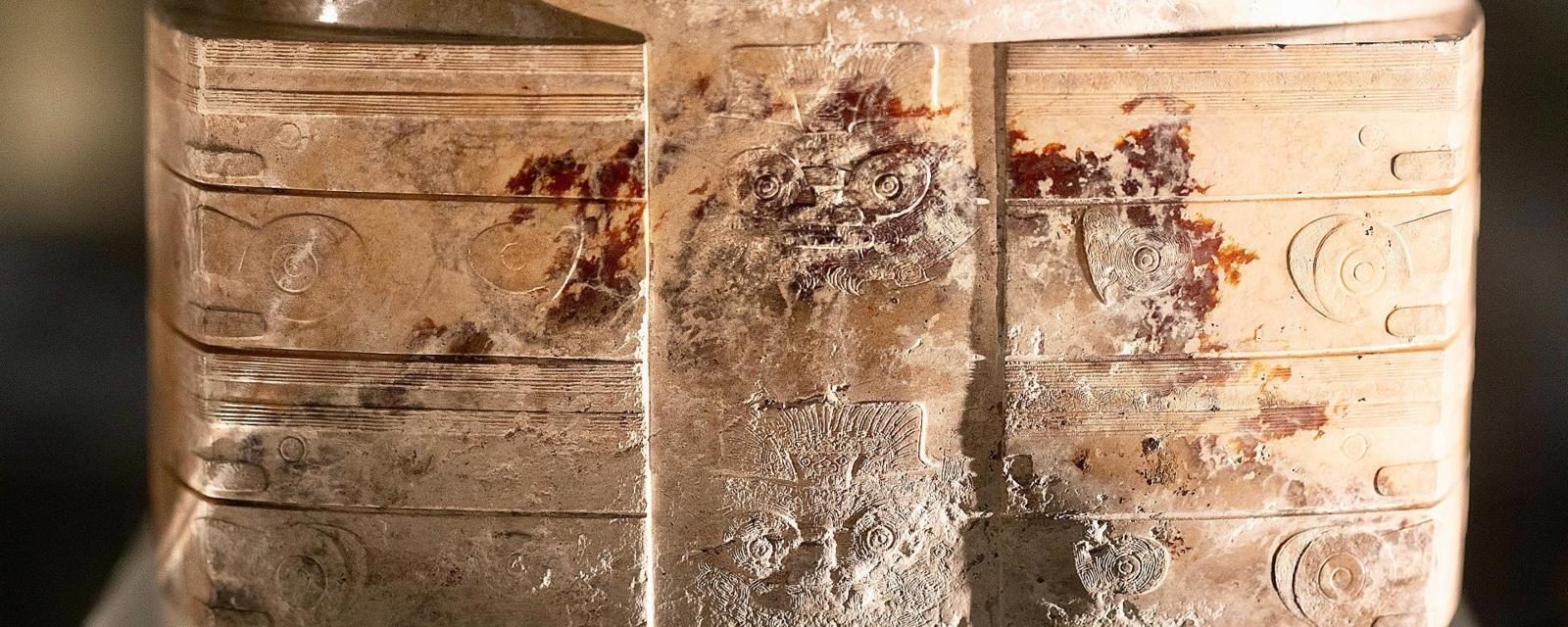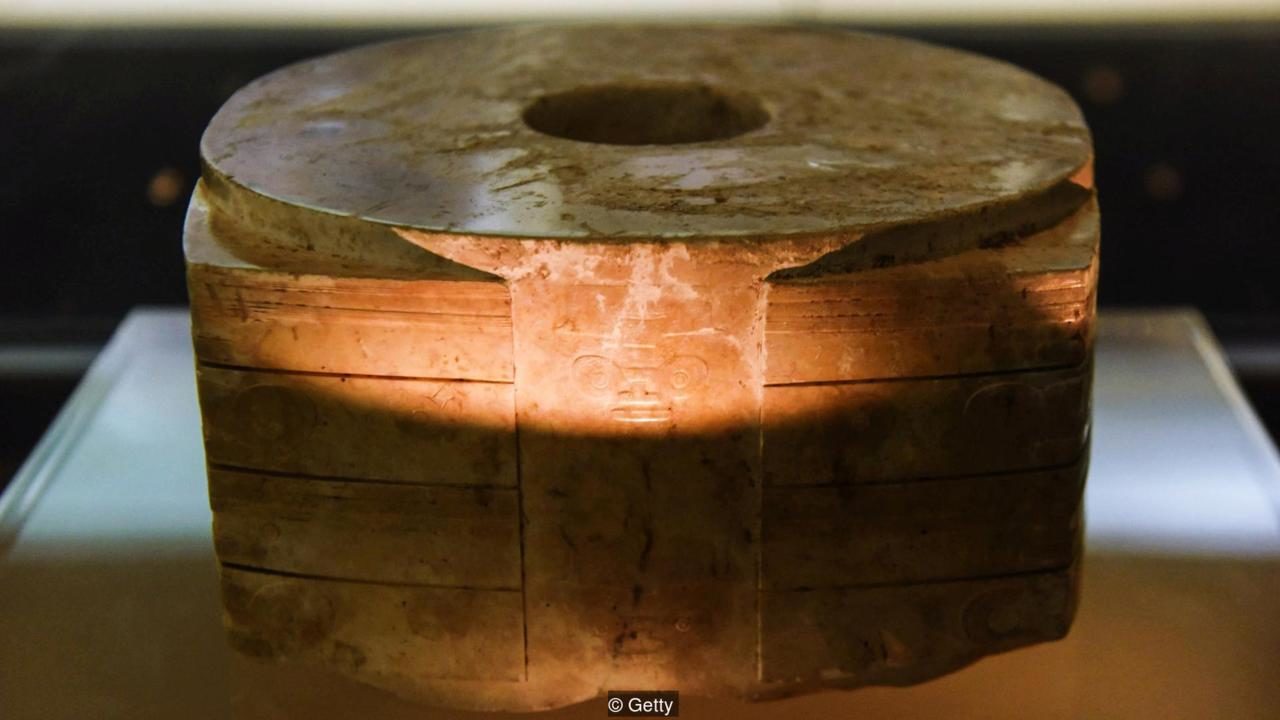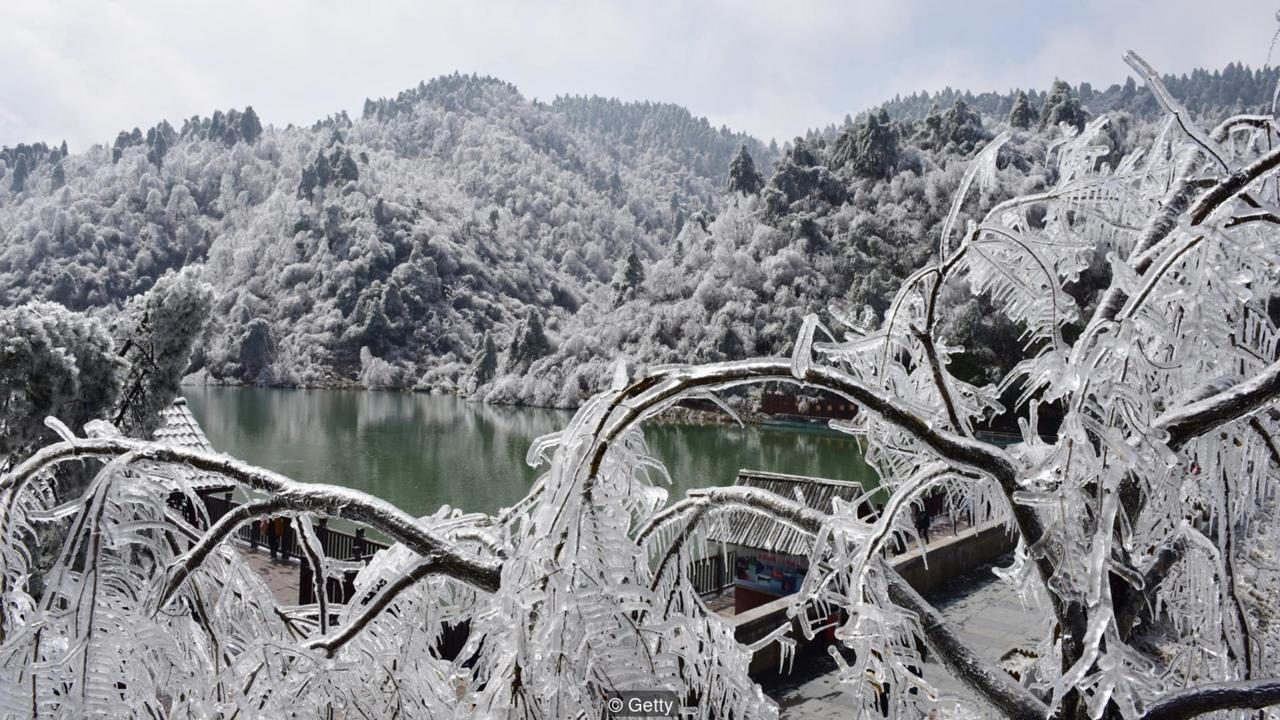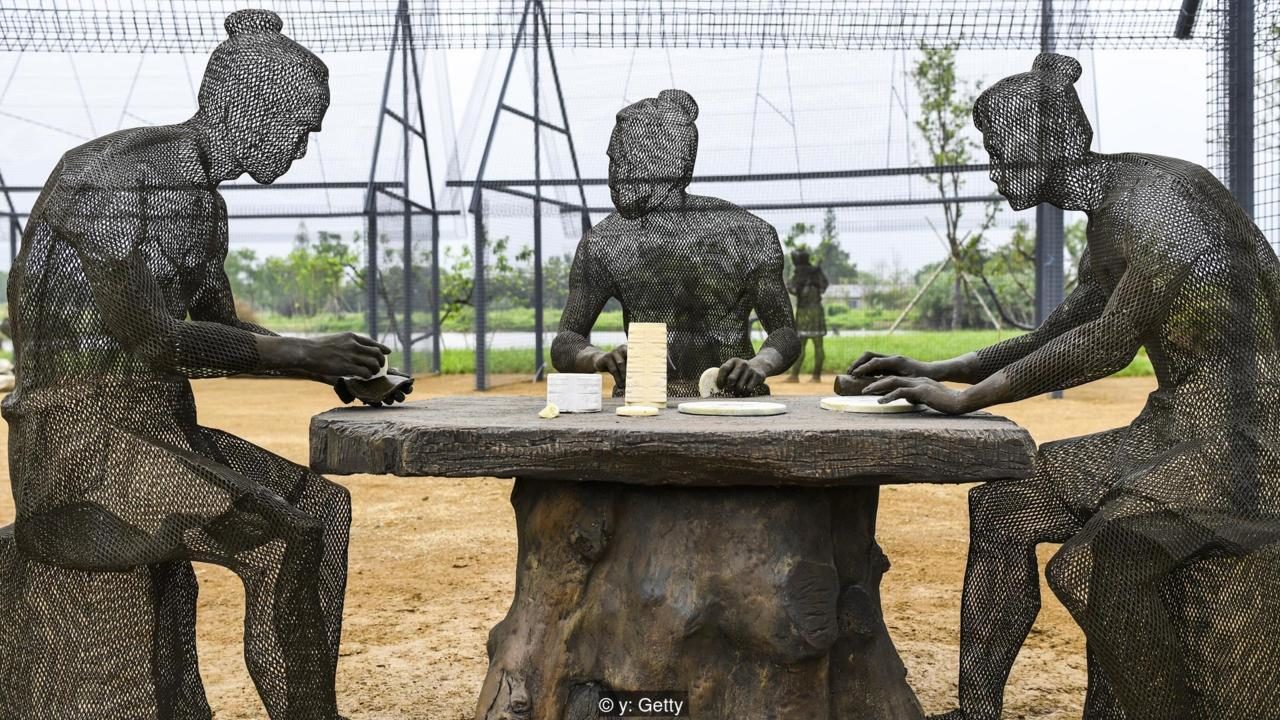
Earlier this year, while filming China's Greatest Treasures, a new six-part television documentary series for BBC World News, I encountered this mysterious character incised on a spectacular ancient jade carving that now belongs to the Zhejiang Provincial Museum in the city of Hangzhou. Known as a 'cong' (pronounced 'ts-ong') - essentially, a jade cylinder, squared on the outside, with a circular tube within - this squat column was recovered by archaeologists from a cemetery for elite members of a complex late Neolithic society that flourished at the site of Liangzhu, around 100 miles (160km) southwest of Shanghai, in the 3rd millennium BC. Traditionally, historians have taught that China's earliest recorded dynasty was the Shang, who ruled during the Bronze Age, in the 2nd millennium BC.

Some scholars even suggest that the origins of the famous Shang 'taotie' motif may be the gargoyle-like, frog-eyed monster that decorates artefacts from Liangzhu, including the 'cong' - which is known as the 'king of cong', because of its impressive heft of 6.5kg (14.33lbs) - that I saw at Zhejiang Provincial Museum.
Earlier this year, the archaeological ruins at Liangzhu were designated a Unesco World Heritage site. Today, visitors can marvel at extraordinary artefacts from the city at the beautiful Liangzhu Museum, designed by British architect David Chipperfield. On display are many more jade grave goods, including ceremonial axe-heads, ornamental combs, and circular discs with a central hole, which look like oversized Polo mints and are known as 'bi'. Located at the foot of Mount Tianmu, the principal settlement of Liangzhu was a fortified town encompassing a rectangular area of approximately 740 acres (299 hectares), protected by a system of moats and rammed-earth walls at least 65ft (19.8m) wide. Visitors could enter via one of eight water gates - suggesting that, in the words of archaeologists Colin Renfrew and Bin Liu, "this was a town of canals as much as of roads".
A civic emblem?
The sophistication of the civilisation that flourished at Liangzhu from approximately 3300-2300 BC is evident not only in the precious finds from the town's high-status cemetery, but also from a remarkable network of monumental earthen dams, amounting to an extensive system of hydraulic works, and carefully managed rice paddy fields, arranged across the surrounding area. These ensured a regular supply of food for the city's inhabitants. Within the settlement, archaeologists discovered a massive pit of charred rice - "perhaps burnt in a granary located in the palace nearby and subsequently discarded," say Renfrew and Liu.

In the past, Chinese scholars believed that the earliest dynasty to value jade was the long-lasting Zhou, which followed the Shang in the 1st millennium BC. The evidence from Liangzhu, though, suggests otherwise. And the 'king of cong' that I saw - carved from a pure, creamy-coloured type of jade called nephrite - is arguably the most spectacular of all the Liangzhu jades. What struck me was how sleek and crisp and gracefully minimal it was - if you weren't familiar with it and were told that it had been carved by, say, the 20th Century modern sculptor Constantin Brancusi, you wouldn't bat an eyelid.
And the precise significance of that 'man/beast motif', as some art historians describe it? Well, in the absence of written records from the site of Liangzhu, scholars can only speculate. For now, we can't be sure if the figure is a deity or a member of the Liangzhu elite - some of whom wore feathered headdresses - such as a shaman or priest. Or maybe, as Renfrew and Liu propose, the motif could be interpreted "in social terms, as representing the corporate community of Liangzhu town". In other words, perhaps the solution to the riddle of this puzzling design is that it is a kind of civic emblem, akin to a Western coat of arms.




Comment: See also: